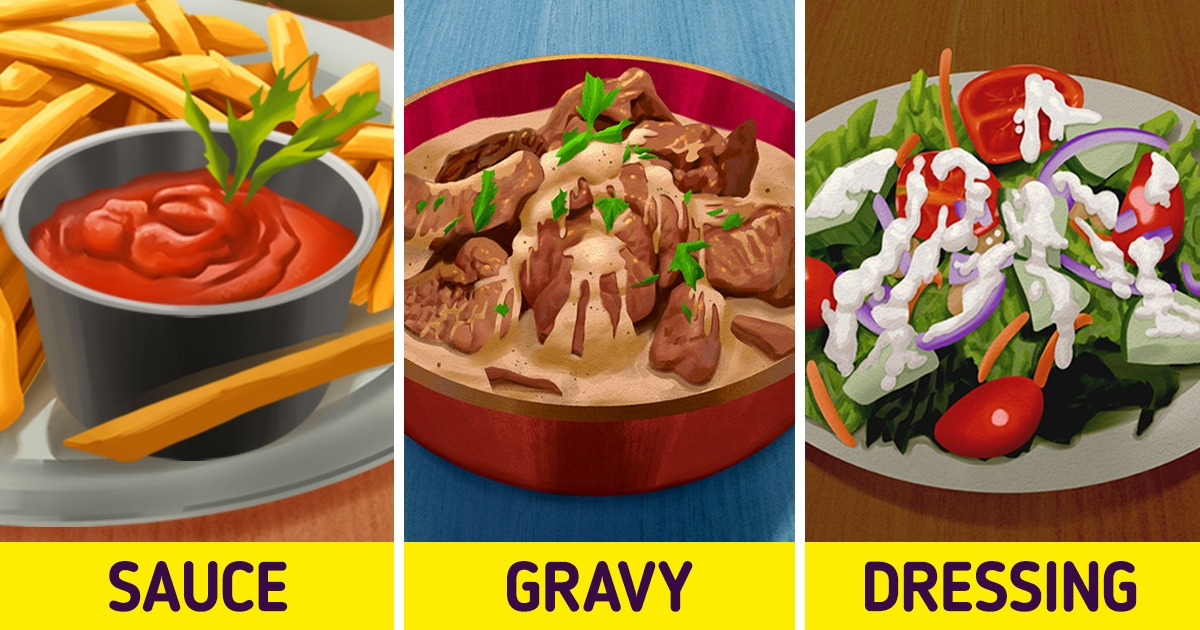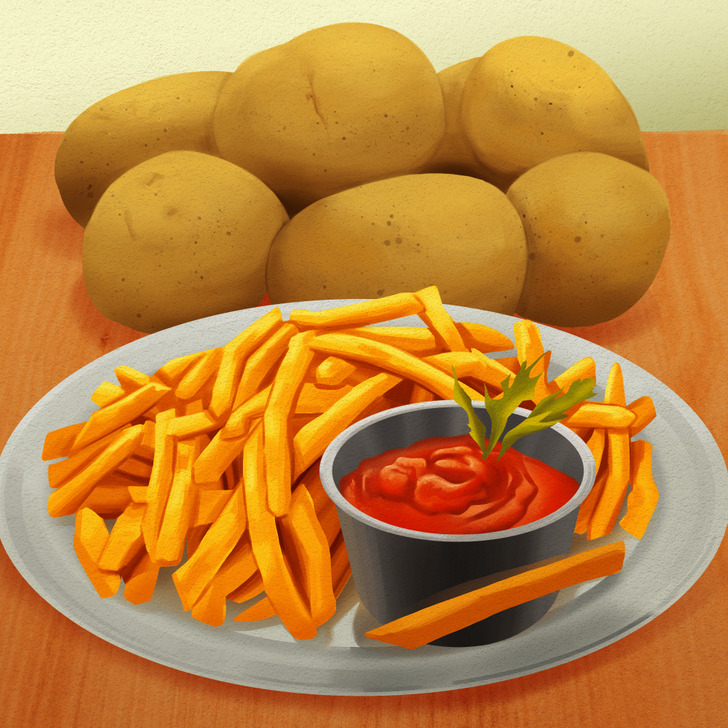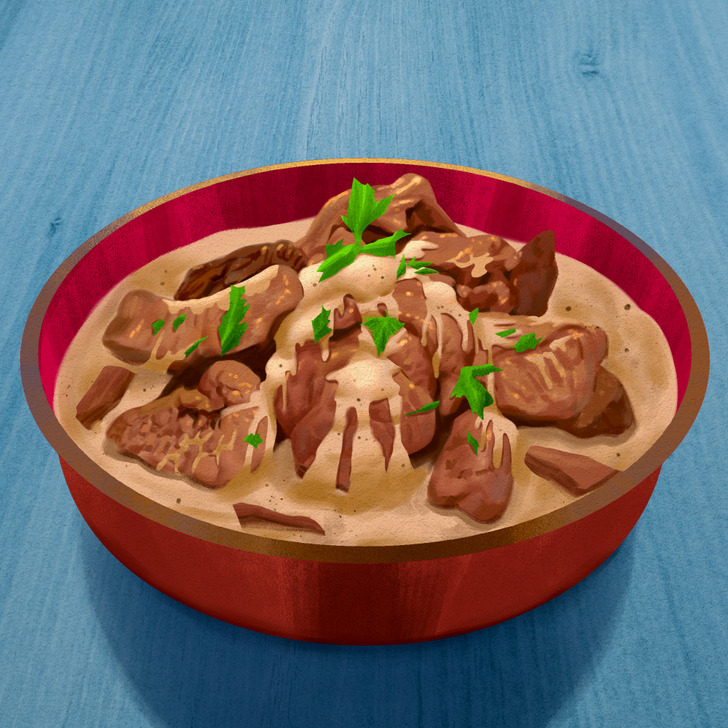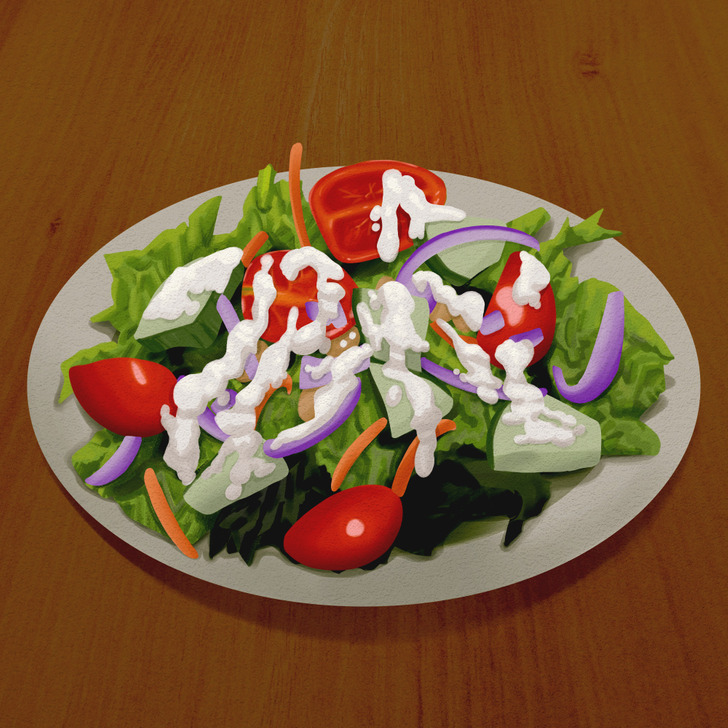A Guide to How Sauce, Gravy, and Dressing Are Different

Sauces, gravies, and dressings are used for enhancing the taste, look, and consistency of dishes. Sauces also include gravies and dressings. Dressings are mostly used for certain dish categories, while sauces are used everywhere, from a culinary perspective.
5-Minute Crafts wants to tell you, in detail, what the differences between sauce, gravy, and dressing are.
1. Sauce

A sauce is a liquid that is served separately from the dish or that is used for cooking it. For example, mayonnaise, ketchup, and soy sauce are most often served separately, while béchamel, pesto, and Bolognese are used to prepare various dishes (Italian pasta, etc.).
Sauces are used both for sweet and salty dishes. They can also be served cold (ketchup) or hot (béchamel).
Examples of sauces:
- Béchamel
- Bolognese
- Mustard
- Ketchup
- Mayo
- Worcestershire sauce
- Ajika
- Tkemali
- Béarnaise
- Hollandaise
- Pesto
- Salsa
- Guacamole
- Hummus
- Custard
2. Gravy

Gravies look like sauces with the only difference being that they are cooked from meat or vegetable juices that are emitted naturally during the process of cooking. These juices are thickened with wheat flour or cornstarch to give the gravy a gooey texture.
Gravy is usually served with fried or baked meats, rolls, rice, pasta, and potatoes. For example, traditional meat gravy is made from the juices of fried meat or poultry. It is cooked on the stove over high heat, along with onions and other vegetables, and then thickened with a thin mixture of water and wheat flour.
3. Dressing

Dressings are used for topping salads.
Examples of salad dressings:
- Vinaigrette
- Ranch dressing
- Caesar
- Thousand Island dressing
- Tahini (sesame paste)
- Blue cheese dressing
Additionally, yogurt, sour cream, mayo, honey mustard, and vegetable oils can be used as salad dressings.